LATEST RELEASE: BetaMatch version 3.4.0 - Get it here!

This section describes briefly how to use the Network Plot Window to modify the current matching network. More detailed information can be found in the subsections
The graphical network consists of (from left to right):
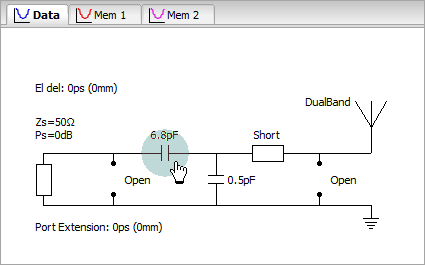
To modify any of these move the mouse until the desired item is selected, this is indicated by a light blue circle.
A component can be either an capacitor, an inductor or one of Open or Short.
Note
If you whish to change the whole component series (eg from 0402 to 0201 sized components) this is done in the Circuit Menu, see Select Component Series.
When a component is highlighted it can be changed by:
Inductors are greenish, Capacitors are brown and Open/Short are red. The current component is yellow and the component with the blue colour will be selected if the left mouse button is pressed.
The window can be moved with the mouse by pointing somewhere in the white frame and holding down left mouse button.
A small box with component information will popup when the mouse moves over the components (see below).
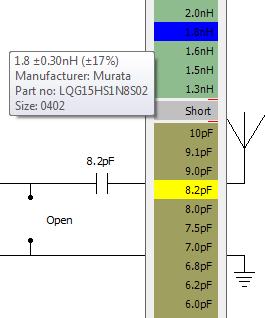
The list that is shown does not show all available components. Instead a shortened list is shown. The reasons for this are:
However, the components that are not in the shortlist are still available in sublists. A small arrow to the right of the component value in the short list indicates that there are more components close to this values that can be selected. When the mouse hovers over a component with arrow a sub-window with more components are displayed.
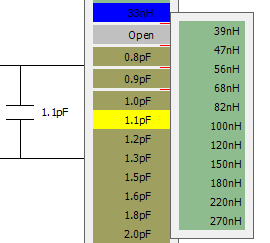
If a component from the sub-window is selected it will be temporary moved and will appear in the short list next time it is shown. It will remain in the shortlist until the component is changed, then it will be removed from the shortlist.
To more permanently change the component selection there are some options in the context menu that is displayed when right-clicking on the component list.
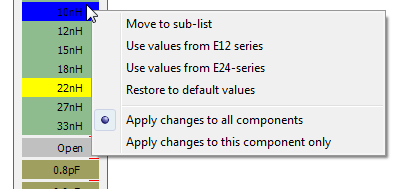
There is also, a slightly different, context menu when you right-click in the sub-list window:
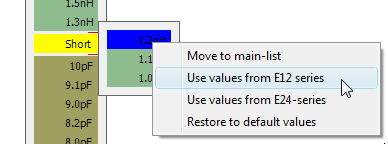
The options in these: menus are:
Note
The optimizer will only use components that are included in the main-list. This means that shortening the main-list (by using only E12 values for example) will make the optimization time shorter, but of course the best network may not be as good as if more components are included in the optimization.
Port Extension and Electrical Delay is used to adjust the reference plane. It is very important that the reference plane is correct - if the reference plane is incorrect all calculated matching networks will also be incorrect. The reference plane should be at the position where the matching network starts.
Port Extension versus Electrical Delay
Port Extension moves the reference plane of the measured data, whereas the Electrical Delay simply adds the delay to the port data. From this follows that for a Port Extension of 20ps an equivalent Electrical Delay would have to be set to twice the value, i.e. 40ps.
Older VNA models may only have Electrical Delay, whereas more modern instruments have Port Extension (and maybe Electrical Delay). Nowadays it is preferred to use Port Extension. For instruments with more than one port the Port Extension can be set individually for each port. Electrical Delay will add the same value to all ports.
Normally Port Extension is included in the saved Touchstone file when data is saved from the VNA. However, Electrical Delay may or may not be saved depending on model (and in some cases on the instrument setting when the data is saved).
Always check that the reference plane is correct by comparing the Smith Chart on the VNA with the Smith Chart in BetaMatch. If the plots are not the same the delay or port extension needs to be adjusted.
To change the Electrical delay click on the text just above the source. Port Extension can be changed by clicking on the ‘Port Extension’ text at the bottom. Use one of these controls to change the delay/extension of the active 1-port data if it is not already included in the loaded Touchstone-file:
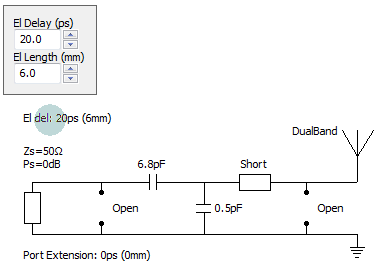
Left click will open the source-editor where the impedance and power level of the source can be controlled. See Source Editor for information on how to change the source.
Left click will open the ‘Load TS-file’ dialog if you have a valid license. Otherwise the menu to load ‘Demo Data’ is shown.